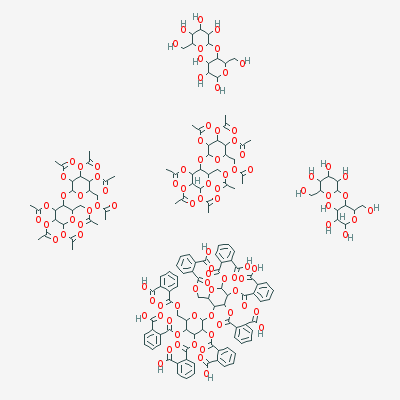Controlled release polymeric ocular delivery of acyclovir.
Praful Balavant Deshpande, Panchaxari Dandagi, Nayanabhirama Udupa, Shavi V Gopal, Samata S Jain, Surenalli G Vasanth
Index: Pharm. Dev. Technol. 15(4) , 369-78, (2010)
Full Text: HTML
Abstract
The aim of the present study was to formulate and evaluate controlled release polymeric ocular delivery of acyclovir. Reservoir-type ocular inserts were fabricated by sandwiching hydroxypropyl methylcellulose (HPMC) matrix film containing acyclovir between two rate controlling membranes of cellulose acetate phthalate (CAP). The solubility and dissolution rate of poorly soluble acyclovir was enhanced by preparing binary systems with beta-cyclodextrin and then incorporated into HPMC matrix. Nine formulations (AB-1 to AB-9) with varying ratio of HPMC (drug matrix) and CAP (rate controlling membrane) were developed and sterilized by gamma radiation. The formulations were subjected to various physico-chemical evaluations. The in vitro release profile of all the formulations showed a steady, controlled drug release up to 20 h with non-Fickian diffusion behavior. A high correlation coefficient found between in vitro/in vivo release rate studies. Formation of acyclovir complex was confirmed by differential scanning calorimetry. In addition, dissolution rate studies revealed improved solubility of acyclovir when complexed with beta-cyclodextrin. Stability studies showed that the ocular inserts could be stored safely at study storage conditions. In conclusion, the present study demonstrated controlled release formulation of acyclovir inserts for ocular delivery using biodegradable polymers.
Related Compounds
| Structure | Name/CAS No. | Molecular Formula | Articles |
|---|---|---|---|
 |
Cellulose acetate phthalate
CAS:9004-38-0 |
C156H174O95 |
|
Preparation, characterization and dielectric studies on carb...
2009-01-05 [Int. J. Pharm. 365(1-2) , 131-5, (2009)] |
|
Sustained-release tablets of indomethacin-loaded microcapsul...
2007-03-21 [Int. J. Pharm. 333(1-2) , 87-94, (2007)] |
|
Restoration of mechanically lengthened jejunum into intestin...
2011-12-01 [J. Pediatr. Surg. 46(12) , 2321-6, (2011)] |
|
Enteric micro-particles for targeted oral drug delivery.
2010-12-01 [AAPS PharmSciTech 11(4) , 1500-7, (2010)] |
|
Bioactivity of WLBU2 peptide antibiotic in combination with ...
2011-12-01 [Int. J. Antimicrob. Agents 38(6) , 530-3, (2011)] |